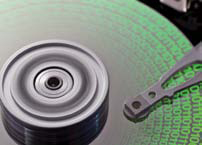Integrator's Guide To DVRs/NVRs Video Storage
By Business Solutions magazine.
 Most Significant Trends
Most Significant Trends
More Cameras, Higher Resolution Cameras, Longer Retention Times — "There are three main factors in today’s video surveillance market that drive our business: more cameras, higher resolution cameras, and longer retention times. All of these unstoppable growth agents drive massive increases in storage capacity, and scale-out storage is a requirement to meet the needs of these growth factors. In fact, IMS forecasts the surveillance storage market to grow at 19% CAGR (cumulative annual growth rate) over the next four years to $4.7B." Lee Caswell, founder and chief strategy officer, Pivot3
Hosted Video — "Hosted video adoption is growing fast in the 8- to 12-camera market and presents a great recurring monthly revenue opportunity for integrators. Even the largest systems integrators in the country have adopted hosted (cloud) video dealer programs. While a hosted solution works well for a one-property install, it's perfect for multi-location organizations such as franchises that have many dispersed locations and need a few cameras per site." Steve Surfaro, security industry liaison, Axis Communications
Open Network-Based Solutions — "The most obvious trend that is well under way is the transition from analog DVR hardware to network-based NVR equipment. Today, systems are built based on open platforms using various system components which can cause hardware and software incompatibility. The transition from purchasing off-the-shelf solutions to application-specific systems has evolved within the security and surveillance market." Steve Maser, VP of OEM, Seneca
DVRs Are Going Away — "It should come as no surprise that the steep market decline for DVRs continues unabated. Industry analyst IMS Research forecasts only 2.3% CAGR through 2015, while projecting a 20.5% growth rate for hybrid DVRs (those with analog and IP inputs). A major factor in the continued trend to IP migration is the demand for and availability of higher resolution HD network cameras at an acceptable price point." Yvonne Schwemmer, senior product marketing manager, Pelco by Schneider Electric
Tips & Advice For Success
Don’t Overlook Easy Sales — “Don’t automatically dismiss an opportunity for IP video just because it’s a small system. IP can be used anywhere if you’re up to date on the latest storage technologies. Furthermore, with ease-ofinstall features of today’s cameras, self-discovering IP devices, and integrated software systems, the number of jobs that can be done in a day increases. And, if the system is sold on a recurring monthly revenue basis, integrators can create steady revenue streams and build customer loyalty.” Steve Surfaro, security industry liaison, Axis Communications
Build Service Offerings — “As prices and margins for hardware DVRs and NVRs decline, continue to build solid service offerings including system consulting, design, and remote management services. These services will continue to be in demand and increase in value as network dependencies grow.” Yvonne Schwemmer, senior product marketing manager, Pelco by Schneider Electric
Consider Hybrid Solutions — “Don’t make the mistake of looking at IP video and analog as an either-or scenario. Hybrid recorders add megapixel where needed yet reduce costs by preserving existing analog infrastructure or allowing lower cost analog cameras to be used in less-critical areas. Customers can upgrade analog channels to IP over time, in essence future-proofing their investment.” Ian Siemer, director of marketing, OpenEye
Know The Application — “NVR equipment makes up about 30% to 40% of the initial project cost. One of the key differentiators to selling and implementing NVR equipment is using application-specific hardware that has been tested, validated, and built specifically for the intended application. This will provide a better solution that maximizes components for throughput and compatibility at a reasonable cost. Having a system built for the intended application guarantees system performance and reduces troubleshooting costs, saving integrators time and money.” Steve Maser, VP of OEM, Seneca
